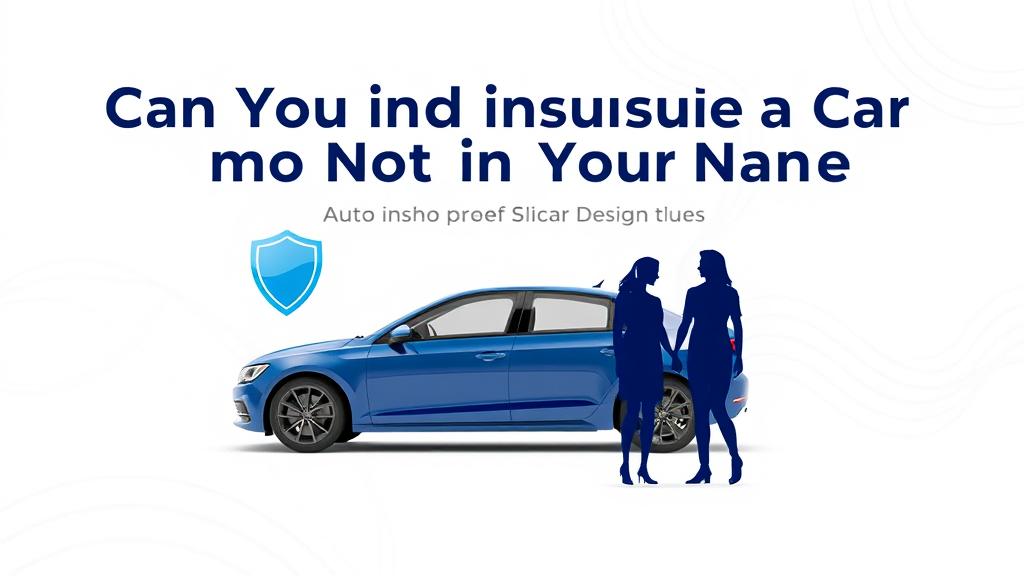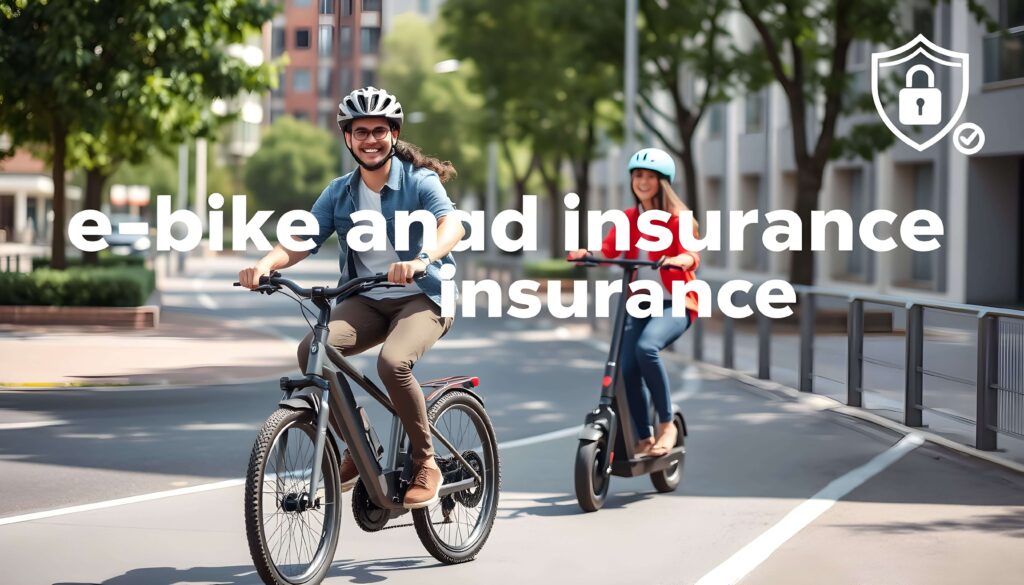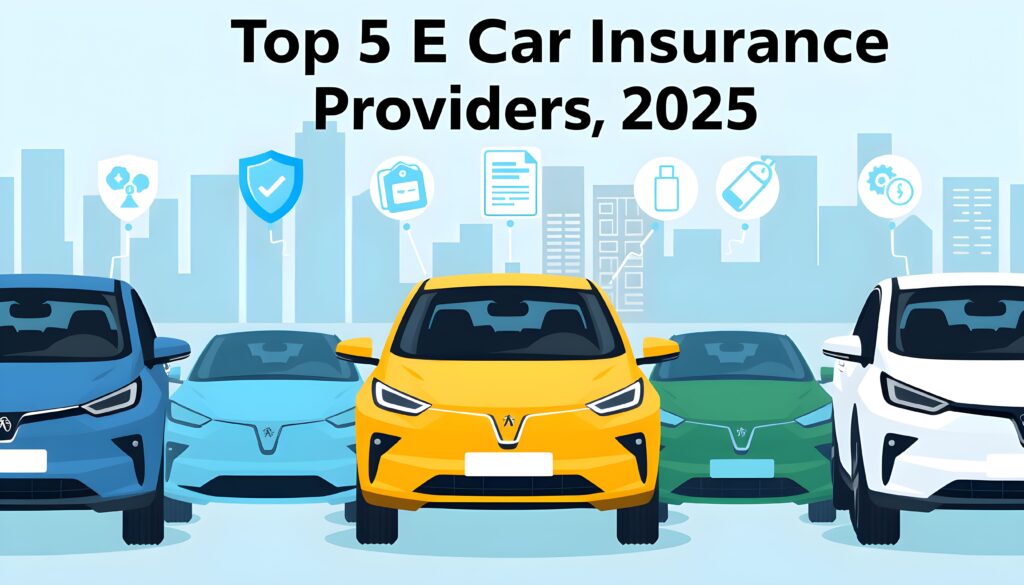
Can you insure a car that isn’t in your name? This is a common question many drivers face, especially when dealing with family cars, loans, or shared vehicles. While it’s not impossible to insure a car not in your name, the process can be more complex and comes with specific requirements and considerations. In this article, we’ll explore the ins and outs of insuring a car in someone else’s name, providing valuable insights and practical advice to help you navigate this situation with confidence.
Understanding the Basics of Car Insurance
Before delving into the specifics of insuring a car not in your name, it’s essential to understand the fundamentals of car insurance. Car insurance is a legal requirement in most states, designed to protect you financially in the event of an accident or other covered incidents. Policies typically cover damages to your vehicle, property damage, and medical expenses for you and your passengers.
When you purchase car insurance, the policy is tied to both the vehicle and the driver. This means that the insurance company considers factors such as your driving history, age, and the make and model of the car. However, the vehicle’s ownership and the policyholder can sometimes be different, which leads us to the main question: can you insure a car not in your name?
When and Why You Might Need to Insure a Car Not in Your Name
There are several scenarios where you might need to insure a car not in your name:
- Family Situations: You might be driving a car owned by a family member, such as a parent, spouse, or sibling. In these cases, it’s important to ensure the car is properly insured, especially if you are the primary driver.
- Loan or Lease Agreements: If you have a car loan or lease, the financial institution might require you to be listed on the insurance policy, even if the car is not in your name.
- Business Use: If you use a company car for personal or business purposes, you may need to be listed on the insurance policy to ensure you have coverage.
- Temporary Arrangements: You might borrow a car for an extended period, and the owner might want you to have your own insurance for added protection.
Understanding these situations can help you determine whether you need to insure a car not in your name and what steps to take to do so.
The Process of Insuring a Car Not in Your Name
Insuring a car not in your name requires a few additional steps compared to insuring your own vehicle. Here’s a step-by-step guide to help you through the process:
- Gather Necessary Information: Before contacting an insurance company, gather all the necessary information about the car, including the make, model, year, and VIN (Vehicle Identification Number). You will also need the owner’s name and contact information.
- Contact the Owner: Speak with the car owner to get their consent. They may need to be present or provide documentation, depending on the insurance company’s requirements.
- Choose an Insurance Policy: Decide on the type of coverage you need (liability, comprehensive, collision, etc.). Consider the risks involved and your budget.
- Provide Proof of Relationship: Some insurance companies may require proof of your relationship to the car owner, such as a lease agreement, a letter from the owner, or a family relationship document.
- Submit the Application: Fill out the insurance application, providing all the required information. Be honest and accurate to avoid any issues later.
- Pay the Premium: Once the policy is approved, pay the premium to activate the coverage. Payment can usually be made online, over the phone, or in person.
While the process can vary slightly depending on the insurance company, these steps should give you a solid foundation for insuring a car not in your name.
Real-World Case Study: John’s Dilemma
John, a 28-year-old software engineer, received a gift from his parents: a 2019 Honda Civic. His parents retained the title and registration, but John was the primary driver. Initially, his parents had the car insured, but they decided to transfer the insurance policy to John for better coverage and lower rates.
John contacted his parents and explained the situation. With their consent, he gathered all the necessary information and contacted his preferred insurance company. The insurer required a signed letter from his parents confirming that John was the primary driver and had their consent to be listed on the policy. After submitting the application and paying the premium, John successfully transferred the insurance policy to his name, ensuring he had the coverage he needed.
John’s experience highlights the importance of communication and proper documentation when insuring a car not in your name. It also demonstrates how the process can be straightforward with the right guidance and support.
Comparing Different Types of Insurance
| Type of Insurance | Coverage | Cost | Usage |
|---|---|---|---|
| Personal Car Insurance | Liability, comprehensive, collision, uninsured/underinsured motorist, medical payments | Moderate to high, depending on coverage and driver profile | For personal use (commuting, leisure, etc.) |
| Scooter Insurance | Liability, comprehensive, collision | Lower, due to smaller size and less risk | For personal or short-distance use |
| Commercial Car Insurance | Liability, comprehensive, collision, cargo, non-owned auto | Higher, due to increased risk and coverage | For business use (delivery, service, etc.) |
This table provides a quick comparison of different types of insurance, helping you choose the right coverage for your specific needs, whether you’re insuring a personal car, a scooter, or a commercial vehicle.
Conclusion and Call to Action
Insuring a car not in your name is possible and can provide the necessary protection for you and the vehicle. By following the steps outlined in this article, you can navigate the process smoothly and ensure you have the right coverage. If you’re currently in a situation where you need to insure a car not in your name, don’t hesitate to get a quote or contact a reputable insurance broker for personalized advice.
Progressive and GEICO are both reliable options for getting a quick online quote. Additionally, consider using a comparison website like Compare.com to explore multiple quotes and find the best deal for your needs.
FAQs
Can I be the primary driver on a car not in my name?
Yes, you can be the primary driver on a car not in your name. However, the car owner must consent, and you will need to provide proof of your relationship to the owner and your primary driving status.
What happens if I get into an accident while driving a car not in my name?
If you get into an accident while driving a car not in your name, the insurance policy will typically cover the damages as long as you are listed on the policy. If you are not listed, you may be held personally liable for any damages.
Do I need to inform the insurance company if I start driving a car not in my name?
Yes, it’s important to inform your insurance company if you start driving a car not in your name. Failure to do so may result in a lapse in coverage or higher premiums if the insurer discovers the change in driving habits.
Can I insure a car that I don’t own but drive regularly?
Yes, you can usually insure a car that you don’t own but drive regularly. You will need the owner’s consent and may need to provide proof of your relationship to the owner and your regular driving status.
What documents do I need to insure a car not in my name?
To insure a car not in your name, you typically need the car owner’s consent, the vehicle’s make, model, year, and VIN, and proof of your relationship to the owner (e.g., a lease agreement, a letter from the owner, or a family relationship document).
How helpful was this article?
A Must-Read for Every Electric Scooter Owner in 2025!
This article is an incredibly thorough and well-researched guide on electric scooter insurance. As someone who recently switched to an e-scooter for my daily commute, I found the breakdown of legal requirements, coverage options, and cost factors extremely helpful. The comparison table was particularly useful in understanding the differences between basic and premium plans.
The tips for lowering premiums and common mistakes to avoid were practical and actionable—I had no idea that bundling with home insurance could save me money! The mention of short-term insurance options for occasional riders was also a great addition.
My only suggestion would be to include real-life case studies or examples of claims to make the risks even more relatable. Otherwise, this is a fantastic resource that every e-scooter rider should read before hitting the road.




